This article was co-authored by Art Fricke. Art Fricke is a home renovation and repair specialist and the owner of Art Tile & Renovation based in Austin, Texas. With over 10 years of experience, he specializes in bathroom and kitchen renovations. Art focuses on a single contractor approach to customized renovation work, and performs projects such as installing custom tile showers, fixing tiled shower leaks, replacing cracked tiles, and installing floor and wall tile.
There are 11 references cited in this article, which can be found at the bottom of the page.
This article has been viewed 25,375 times.
If you want to change the interior decor of a room or want to add carpet to a section of your house, laying down carpet tiles is a simple and easy solution. You can install carpet tiles over linoleum, hardwood, or concrete floors. To install carpet tiles, you’ll need to design the carpet layout, make sure the tiles fit, then cut and adhere them to the floor. If you use the right materials and follow the right steps, you can install carpet tile in virtually any space in your house!
Steps
Designing Your Floor
-
1Choose a style of carpet tile. Carpet tiles come in a variety of designs and types. Find a tile that will compliment the colors of your room. Also, there are traditionally two types of tile--those that come with a peel-off adhesive on the back and those that have no adhesive. The peel-off adhesive style is typically more expensive.[1]
- If you purchase the tile with no adhesive, you may also have to buy carpet glue or double-sided carpet tape.
- Select a carpet tile that blends in with the room’s style and colors, rather than a tile that stands out.
-
2Measure the square footage of the floor that you want to cover. To get the area of your floor, multiply the width by the length of the floor. If you have an irregularly sized floor, divide the floor into separate, measurable sections, then add the total square feet of each section together. Getting this figure will help you determine how many carpet tiles you'll need.[2]
- When you purchase your tile, buy extra tile in case you make mistakes.
Advertisement -
3
-
4Position your tiles in the same direction for a uniform design. Each tile should have arrows on the back of it that help you determine which direction the tile is facing. Line your tiles up so that they are all facing in the same direction for a uniform design.[5]
-
5Alternate your tiles for different designs. Instead of facing all of your tiles in a single direction, alternate every other tile to face in a different direction. This will make your carpet tiles look unique. Try out different configurations and styles on your paper design before committing to a design.[6]
Fitting the Tiles
-
1Vacuum and wipe down the floor. Use a floor vacuum and get all of the dust and dirt from off the surface of your floor. Then, use a damp mop or rag to wipe down the floor that you plan on laying the tile over. Let the floor dry before moving on to the next step.[7]
-
2Draw two lines intersecting in the center of the room. Measure from the corner of the wall to the center of a wall and mark it. Draw a line with chalk down the center of your floor to the other side of the room. Repeat the process on the adjacent wall so that you draw two lines that intersect in the exact center of the room.
- For irregularly sized floors, break the floor up into separate pieces before drawing the center lines. This will help you know where you should start laying the tiles.
- Use a straightedge to help you draw the lines straight.
-
3Lay down four tiles in each quadrant of the cross. Position each of the tiles so that the sides of the tile line up with the chalk cross that you drew. Do not use adhesive--just make sure that the tiles fit properly.
-
4Lay down tiles from the center out. Position the next tiles right against the edge of the four tiles you have in the center and work your way out to the edges of the room. Work on filling in each quadrant before moving onto the next one. Make sure to place the tiles so that each side fits snugly against the side of the tiles next to it. Continue to lay down the carpet tile until you reach the edges of the room.[8]
Cutting Tiles to Fill the Gaps
-
1Measure the gap between the carpet tile and the wall. Use a tape measure to measure the distance between the wall and the outer edge of the carpet. You will fill in this space with a cut tile.[9]
- Using pieces that are thinner than 4 inches (10 cm) to fill in the gaps may look strange. In order to achieve minimal gaps, move your four center tiles left, right, up, or down so that the gaps aren't tiny.
-
2Flip a carpet tile over and mark the measurement. Use a straightedge to draw a straight line down the back of the carpet so that one portion is the same size as the gap between the wall and the carpet.[10]
-
3Cut the tile with a razor blade. Place the carpet you’re going to cut on top of a piece of scrap carpet or cardboard so that the blade doesn’t damage anything under the carpet. Cut down the line that you drew, using the flat edge of a level or measuring triangle to act as your guide. Start by making a couple of light cuts into the carpet before applying more pressure to the blade and cutting through it completely.[11]
-
4Fit the tile into the gap. Take the piece of carpet that you just cut and fit it into the gap. Make sure that it fits snugly in place. If you notice that there is still a gap in the wall, you’ll have to recut another piece of carpet. If the new piece of carpet overlaps the existing carpet, you’ll have to measure and cut it down even further.[12]
- The new piece of carpet should form a tight seal between your carpet tiles and your wall.
-
5Repeat the steps until all the gaps are filled in with carpet tile. Continue measuring, cutting, and fitting the tiles into the gaps around your walls until the entire area is covered in carpet tiles. Now that you know all the tiles will fit, you can start to adhere the tiles to the floor.
- If the tiles form a tight seal, you may not even have to apply adhesive to hold them in place, especially for low-traffic areas.
Adhering the Tiles to the Floor
-
1Peel off the back of the tiles and press them onto the floor. Peel the thin clear layer of plastic off the back of your carpet tiles. This will reveal a sticky backside that will hold to your floor. Press the four center tiles in place and fill out the rest of the room just as you did when you fitted the tiles.[13]
-
2Apply carpet tape or glue to the back of the tiles if there's no adhesive. Unpeel one side of the tape and press it against the back corner of your carpet tile. If you are using a carpet glue, apply the glue in a straight line on each edge on the back of the carpet. Work on a single carpet tile at a time when applying any adhesive.[14]
-
3Lay the tiles down so that they fit perfectly on your floor. Once the adhesive is applied, lay down your tiles in the same way that you did when you fit them. Press down on the top of the carpet tiles with your hands to smooth them out.
-
4Repeat the process until all of your tiles are glued to the floor. Continue laying down tiles until you fill out the room. If you laid down the tiles properly during the fitting stage, the tiles should fit snugly and shouldn't have any gaps.
Expert Q&A
-
QuestionAre carpet squares a good option?
 Art FrickeArt Fricke is a home renovation and repair specialist and the owner of Art Tile & Renovation based in Austin, Texas. With over 10 years of experience, he specializes in bathroom and kitchen renovations. Art focuses on a single contractor approach to customized renovation work, and performs projects such as installing custom tile showers, fixing tiled shower leaks, replacing cracked tiles, and installing floor and wall tile.
Art FrickeArt Fricke is a home renovation and repair specialist and the owner of Art Tile & Renovation based in Austin, Texas. With over 10 years of experience, he specializes in bathroom and kitchen renovations. Art focuses on a single contractor approach to customized renovation work, and performs projects such as installing custom tile showers, fixing tiled shower leaks, replacing cracked tiles, and installing floor and wall tile.
Home Renovation & Repair Specialist They can be, but they require a little planning. In designing your carpet tile layout, try making a grid using grid paper. Having a concrete visual aid can help you visualize the spatial relations of the room.
They can be, but they require a little planning. In designing your carpet tile layout, try making a grid using grid paper. Having a concrete visual aid can help you visualize the spatial relations of the room.
Things You’ll Need
- Carpet tiles
- Measuring tape
- Level or measuring triangle
- Razor blade
- Pen or pencil
- Paper
- Adhesive tape or glue (optional)
References
- ↑ http://www.improvenet.com/r/costs-and-prices/carpet-tiles
- ↑ https://www.familyhandyman.com/floor/carpet-repair/how-to-lay-carpet-squares/view-all/
- ↑ https://www.familyhandyman.com/floor/carpet-repair/how-to-lay-carpet-squares/view-all/
- ↑ Art Fricke. Home Renovation & Repair Specialist. Expert Interview. 1 July 2020.
- ↑ https://www.youtube.com/watch?v=y6SX3_tl6fQ&feature=youtu.be&t=2m5s
- ↑ https://www.youtube.com/watch?v=oUDqawe5d00&feature=youtu.be&t=41s
- ↑ http://www.popularmechanics.com/home/interior-projects/how-to/a20439/carpet-tiles-can-transform-a-room-in-minutes/
- ↑ http://www.popularmechanics.com/home/interior-projects/how-to/a20439/carpet-tiles-can-transform-a-room-in-minutes/
- ↑ https://www.youtube.com/watch?v=oUDqawe5d00&feature=youtu.be&t=1m50s
- ↑ https://www.youtube.com/watch?v=y6SX3_tl6fQ&feature=youtu.be
- ↑ https://www.youtube.com/watch?v=oUDqawe5d00&feature=youtu.be&t=2m10s
- ↑ https://www.youtube.com/watch?v=y6SX3_tl6fQ&feature=youtu.be&t=3m11s
- ↑ https://www.familyhandyman.com/floor/carpet-repair/how-to-lay-carpet-squares/view-all/
- ↑ https://www.youtube.com/watch?v=oUDqawe5d00&feature=youtu.be&t=1m11s
About This Article
To install carpet tile, draw the sections that you want to carpet on a piece of paper and arrange the tiles in a design or style that you like before you get started laying down the tiles. Next, section off the room into four quadrants and lay the tiles down, starting in the center and working your way out. Once all of the tiles are in position, peel the thin, clear layer of plastic off the back of each one to reveal the sticky backside and press the tiles in place. For tips on what to do if your tiles don't have an adhesive backing, read on!
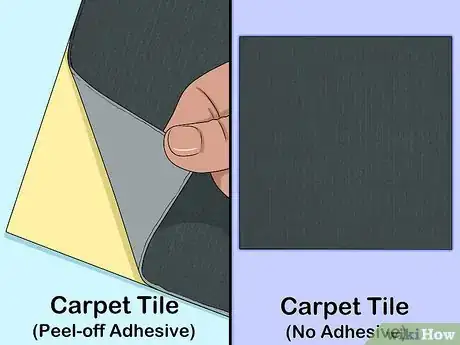
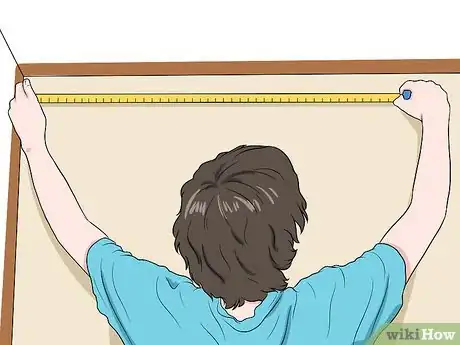
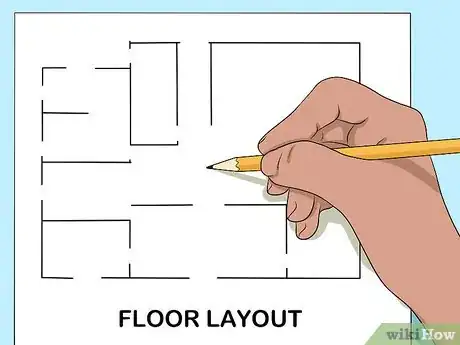

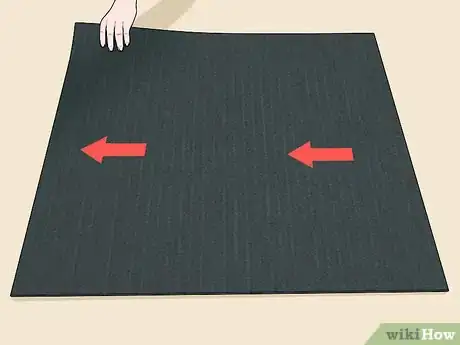
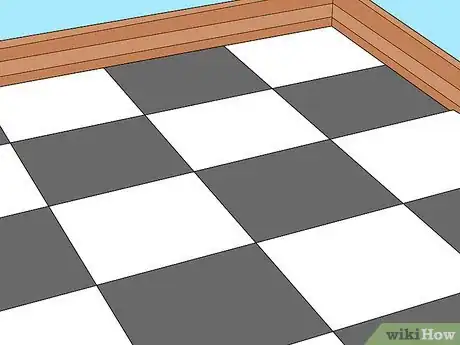
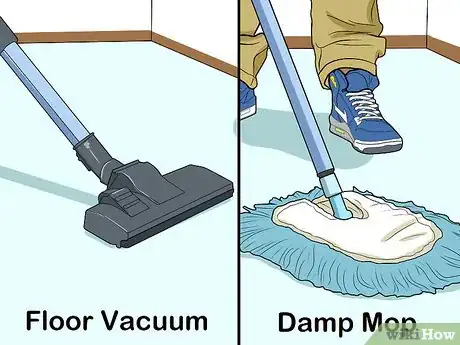
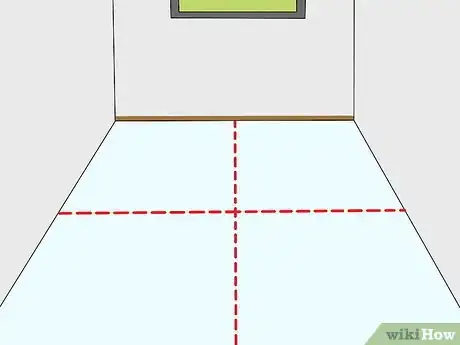
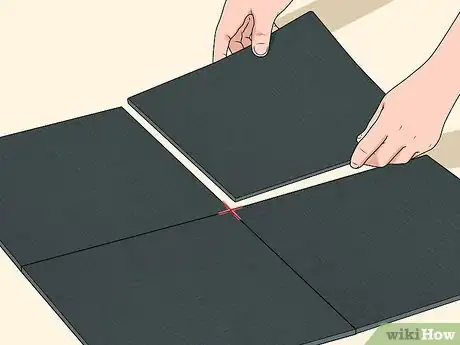
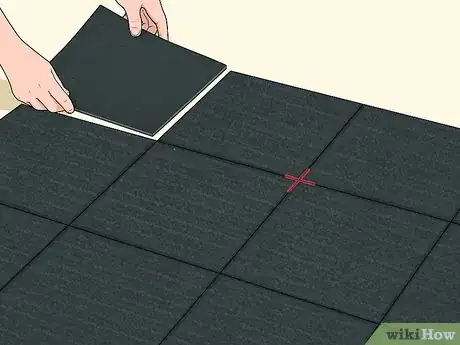
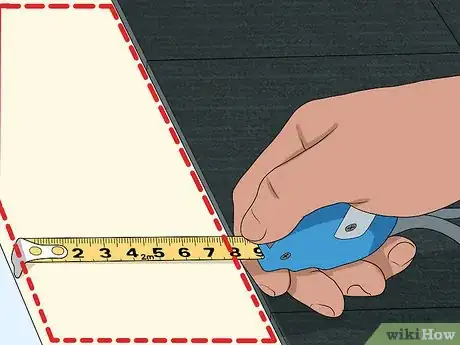
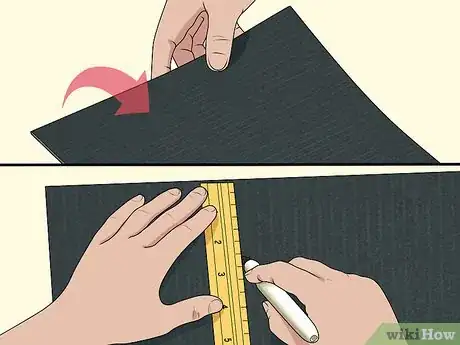
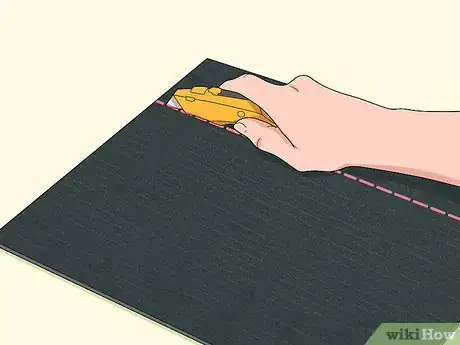
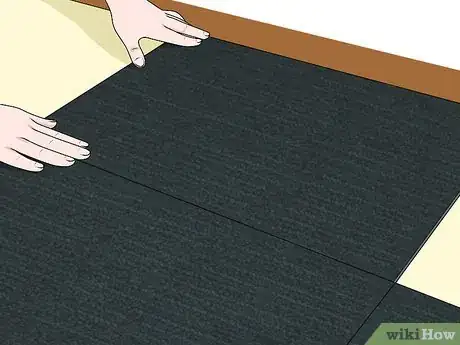
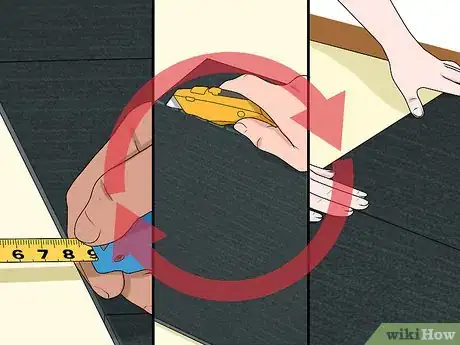
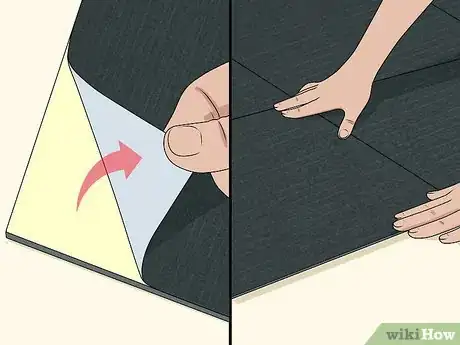
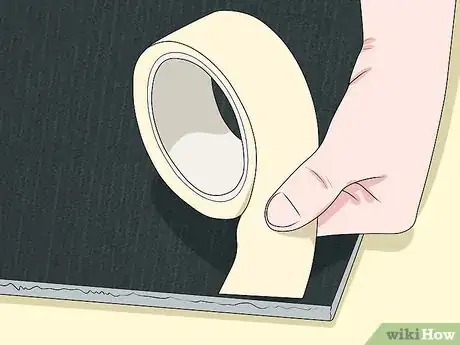
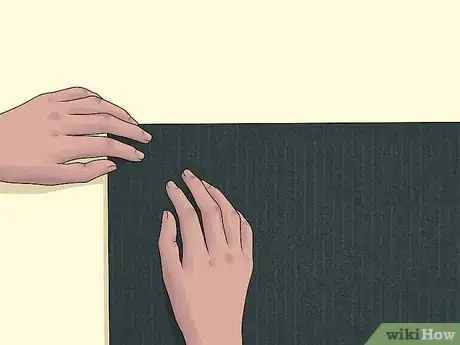
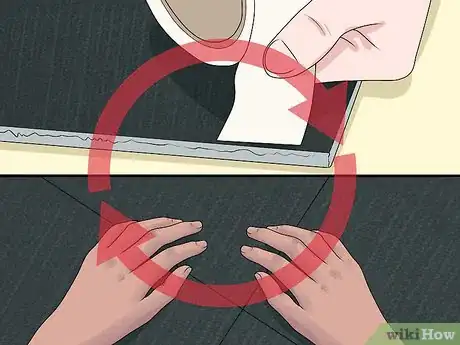
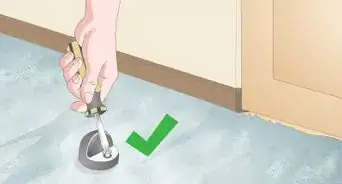
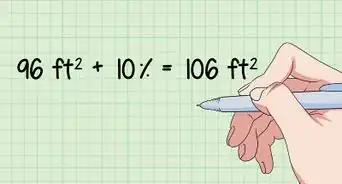
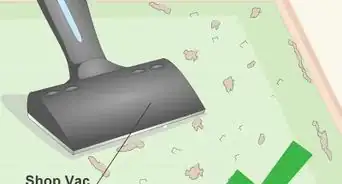
-Step-19.webp)

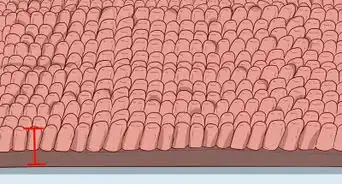

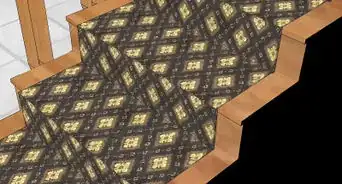
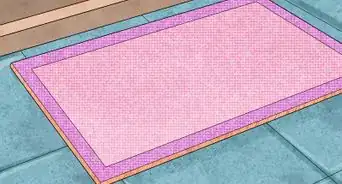




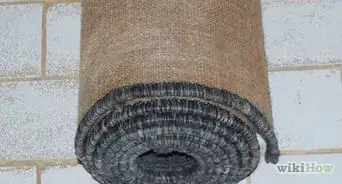







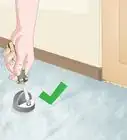
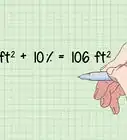

-Step-19.webp)


































